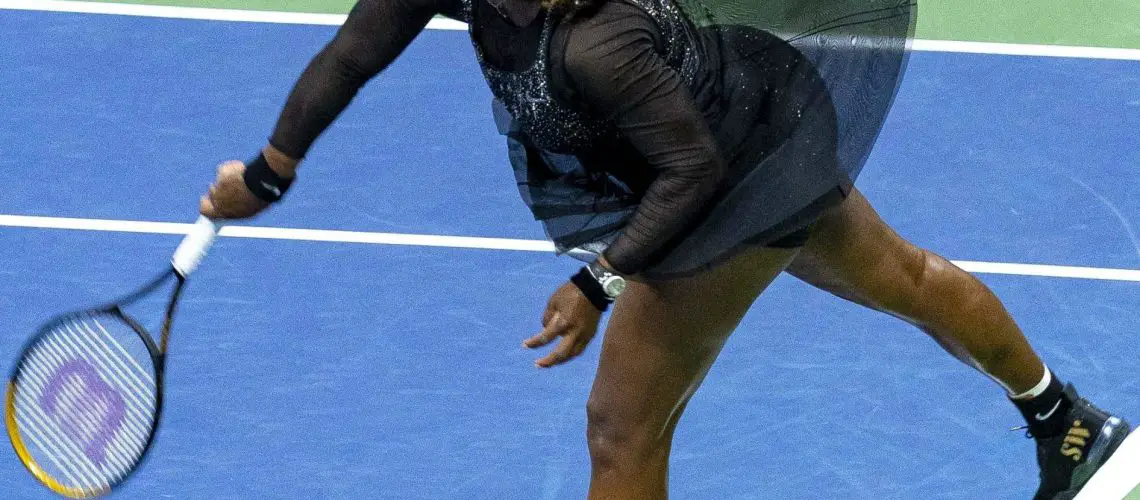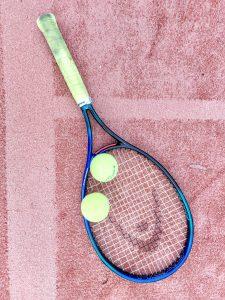We may earn money or products from the companies mentioned in this post.
Introduction

Tennis rackets have come a long way since their humble beginnings With a rich history and constant evolution, these essential tools of the trade have played a pivotal role in shaping the sport as we know it today From wooden frames to advanced materials, tennis rackets have undergone significant changes to optimize performance and enhance player experience
A Brief Overview
In the early days of tennis, rackets were crafted using wood, typically ash or maple These wooden frames provided players with limited power and control but laid the foundation for future advancements As technology progressed, manufacturers began experimenting with different materials
Modern tennis rackets are now predominantly made from graphite or carbon fiber composites These materials offer exceptional strength, lightness, and flexibility, allowing for increased power and maneuverability on the court The introduction of synthetic strings further revolutionized racket design by enhancing spin control and durability
The Importance in the Sport
Tennis rackets are not merely equipment; they’re an extension of a player’s skill and style A well-suited racket can make all the difference in delivering powerful serves, accurate shots, and precise volleys The right racket can help players maximize their potential and achieve optimal performance
Professional players often spend hours meticulously selecting their ideal racket based on factors such as weight distribution, grip size, string tension, and head shape By finding the perfect match between player and racket, athletes can unlock their true potential on the court
Factors That Influence Tennis Racket Lifespan

Material Quality
The quality of materials used in constructing tennis rackets plays a crucial role in determining their lifespan Rackets made from high-quality graphite or carbon fiber composites tend to be more durable than those made from lower-grade materials These advanced materials are designed to withstand the rigors of intense gameplay, reducing the risk of cracks or breakages
Additionally, the quality of strings can also affect a racket’s lifespan High-quality synthetic or natural gut strings offer better durability and longevity compared to cheaper alternatives Regular string maintenance, such as restringing when necessary, can further extend the life of a racket
Construction and Design
The way a tennis racket is constructed and its design features can significantly impact its lifespan Rackets with reinforced frames, shock absorption technology, and sturdy grommets tend to be more resilient against wear and tear Innovative designs that distribute weight evenly throughout the racket also contribute to increased durability
A well-designed racket will have a balance between power and control while minimizing vibrations on impact This not only enhances a player’s performance but also reduces stress on the frame, leading to a longer lifespan
Determining the Lifespan of a Tennis Racket

When it comes to your trusty tennis racket, determining its lifespan can be a tricky task After all, this essential piece of equipment is subjected to countless smashes, serves, and volleys on the court However, there are some telltale signs of wear and tear that can give you an idea of when it’s time to retire your racket and invest in a new one
Signs of wear and tear
The first indicators of a worn-out racket are often found in its frame Cracks or fractures may start to appear, compromising the integrity and strength of the racket Additionally, prolonged exposure to heat or moisture can cause warping in the frame, affecting its performance on the court
Another aspect to consider is the deterioration of the racket’s strings Over time, they can fray or even break completely due to regular use Furthermore, as strings lose their tension and responsiveness, your shots may lack power and control
Factors affecting longevity
Apart from wear and tear, several factors play a role in determining how long your tennis racket will last
Player skill level and play frequency are crucial elements Beginners tend to put less stress on their rackets compared to advanced players who hit harder shots with greater intensity Similarly, casual players who enjoy occasional matches won’t subject their rackets to as much strain as competitive players who practice regularly or participate in tournaments
The material, brand, and model of your racket also contribute significantly to its longevity High-quality materials like graphite or carbon fiber offer durability and resilience against wear and tear over time Moreover, certain brands have established reputations for producing reliable rackets that withstand heavy usage without compromising performance
Maintaining Your Tennis Racket for Longevity

When it comes to keeping your tennis racket in top shape, regular restringing is key But how do you know when it’s time to restring? One indicator is the number of playtime hours accumulated Over time, the strings endure wear and tear from constant hitting, causing them to lose tension or even break So, if you’ve been playing for a while and notice a significant decrease in string performance, it’s probably time to restring
Choosing the right string type, gauge, and tension is also crucial for maintaining your racket’s longevity Different players have different preferences when it comes to their strings Some prefer more control while others prioritize power The gauge refers to the thickness of the string, with thinner gauges providing more feel but less durability Lastly, string tension plays a role in how the ball responds off the racket Finding the perfect combination that suits your playing style will enhance both your game and your racket’s lifespan
In addition to restringing, proper storage practices are essential for preserving your racket’s condition Extreme temperatures can have detrimental effects on the frame and strings of your racket It’s best to avoid exposing it to direct sunlight for prolonged periods as this can cause warping or fading of materials During winter months or times when you won’t be using your racket frequently, storing it indoors will protect it from temperature fluctuations and potential damage
Investing in a quality racket cover or bag is another wise move for maintaining its longevity These protective accessories shield your racket from dust, moisture, and accidental bumps during transportation or storage By giving your cherished tennis companion an extra layer of defense against external elements, you’re ensuring its durability over time
Maximizing Your Investment: When to Replace Your Tennis Racket

As a tennis player, your racket is an essential tool that can greatly impact your performance on the court Over time, however, even the best rackets can start to show signs of wear and tear Knowing when it’s time to replace your racket is crucial for maximizing your investment and ensuring you continue playing at your best
Recognizing when it’s time for an upgrade
1 Consider performance changes: One of the key indicators that it may be time to replace your tennis racket is if you notice a significant decrease in power or control during your shots If you find yourself struggling to generate the same level of power or accuracy as before, it could be a sign that your racket has lost its optimal performance
a Decreased power or control: If you feel like you’re constantly exerting more effort but getting less out of your shots, it might be time for an upgrade
b Increased discomfort during play: Another telltale sign is if you start experiencing discomfort or pain in your hand, arm, or shoulder while using the racket This could indicate that the grip size or weight distribution of the racket is no longer suitable for you
2 Assess overall condition: Apart from performance changes, evaluating the overall condition of your racket can also help determine whether it’s time for a replacement
a Evaluate frame integrity: Inspect the frame of your racket for any cracks, dents, or structural damage A compromised frame can significantly affect the racket’s stability and durability
b Check strings for excessive wear: Examine the strings closely for signs of fraying, loosening tension, or breakage Worn-out strings not only impact performance but also increase the risk of injuries
Selecting the right replacement racket
1 Consult with a professional or coach: Seek advice from a tennis professional or coach who can provide personalized recommendations based on your playing style, skill level, and physical attributes Their expertise can help you narrow down your options and find the perfect racket for you
2 Conduct thorough research on racket options: Take the time to research different racket models, brands, and technologies available in the market Look for rackets that align with your playing style and preferences
3 Consider your playing style and needs: Reflect on your playing style – whether you’re an aggressive baseliner, a serve-and-volley player, or someone who values control over power Choose a racket that caters to your specific needs and enhances your strengths on the court
By recognizing the signs of when it’s time to replace your tennis racket and carefully selecting a suitable replacement, you can continue improving your game while maximizing the investment in your equipment
Useful Links

How long does a good tennis racquet last?
Ask the Stringer: Do Tennis Racquets Ever Wear Out? …
What is The Lifespan of a Tennis Racquet?
Do Tennis Racquets Wear Out? – Everything You Need To …
Four Signs It’s Time to Start Shopping for a New Tennis …
How Long Can A Racket Last? – Tennis Make Move
How Long Does A Tennis Racket Last – Mary Catherine blog
How long does a paddle racket last and how to extend its …
How Long Do Tennis Racket Strings Last?
How Often Should I Re-String My Tennis Racket?
Tennis Racquet Stringing – False Economy by Tennis Players
Are There Different Size Tennis Rackets?
How to String a Tennis Racquet: 13 Steps (with Pictures)
Extended Length Tennis Rackets – What Are They & Who …
How often should you Change Tennis Strings?
4 Tips to Make Your Tennis Racket Last Longer
Basic Racket Care
When Should You Replace A Squash Racquet?






